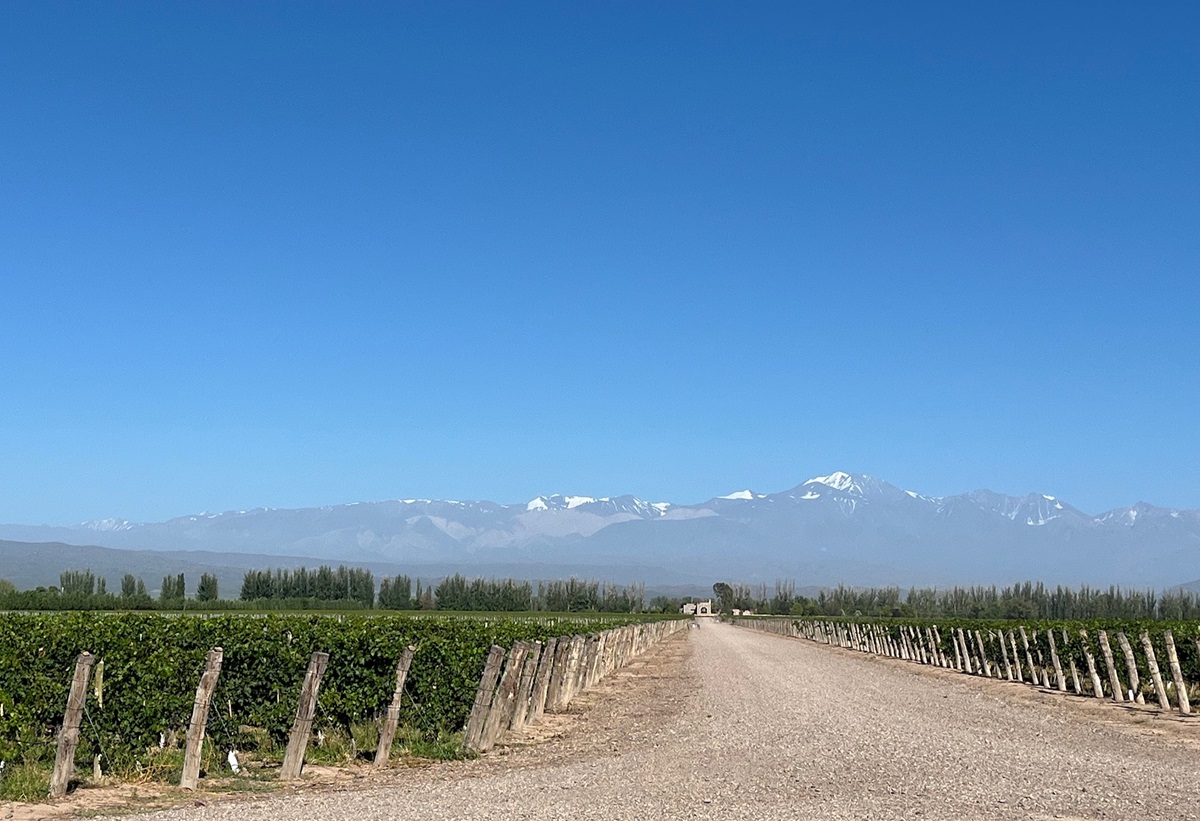SANTORINI
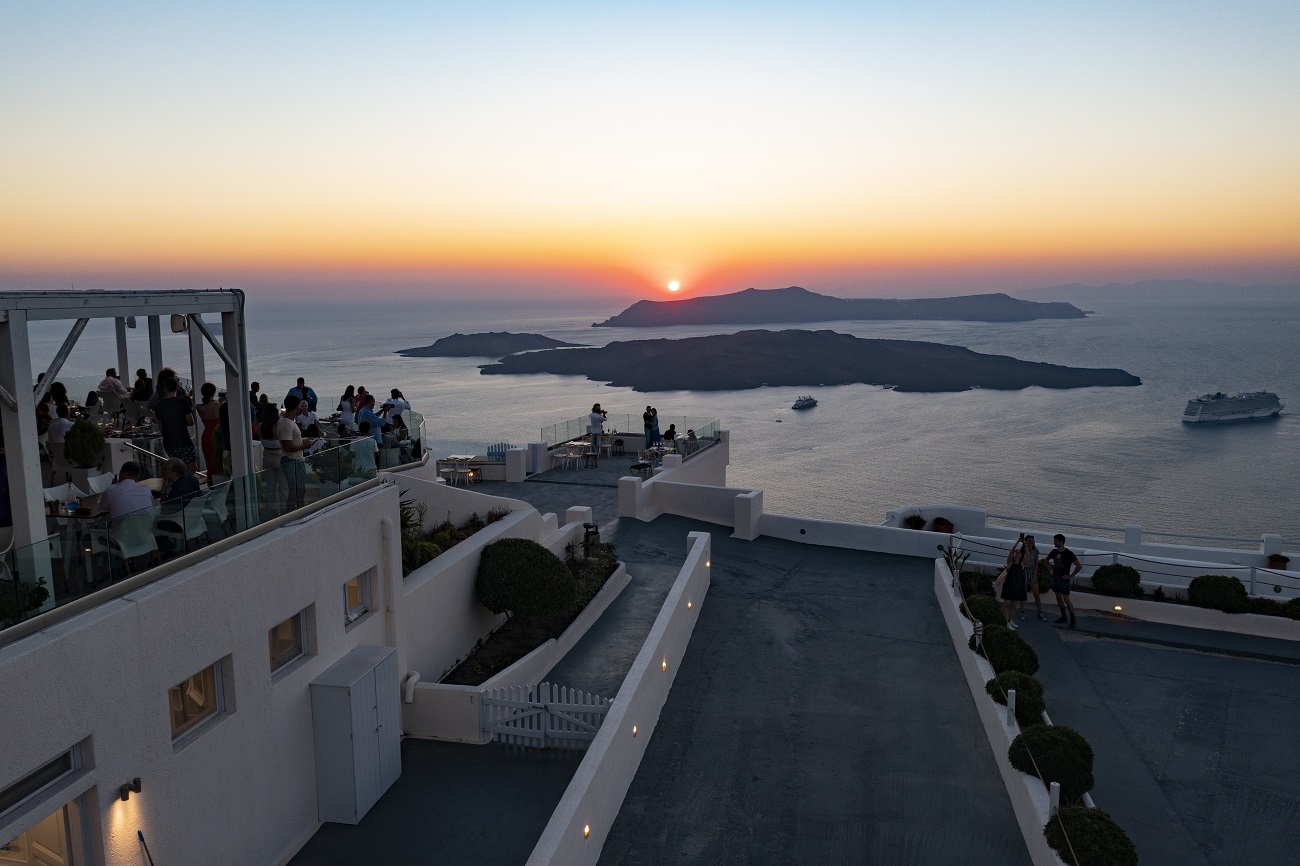
“Too much tourism and too little water are our main challenges”, explained leading winemaker Lefteris Anagnostou of Anhydrous winery, who has worked on the Cyclades island of Santorini in the Aegean sea for the past eight years.
Anagnostou was in Scotland last month with a group of winemakers promoting the wines of Santorini PDO (protected designation of origin) to local sommeliers. World famous for the high quality and versatility of its native white Assyrtiko grape, it was clear from our discussion that Santorini’s small wine industry is now in need of UNESCO protection.
“Santorini has the oldest continually cultivated vineyards on earth dating back 3,500 years, but our precious 1,100 hectares are under threat from tourism. In the 1960’s the island had twice this number of vines”, explained Greek oenologist Sofia Perpera.
However, there are signs that this trend towards taking valuable vineyard land for hotels has slowed recently, as demand for the island’s wines has gained momentum and abandoned vineyards are gradually reclaimed. In addition, there is a new initiative to train the next generation of growers in traditional ‘Koulari’ vine cultivation – to encourage them to stay on the island which is 120 miles southeast of Greece’s mainland.
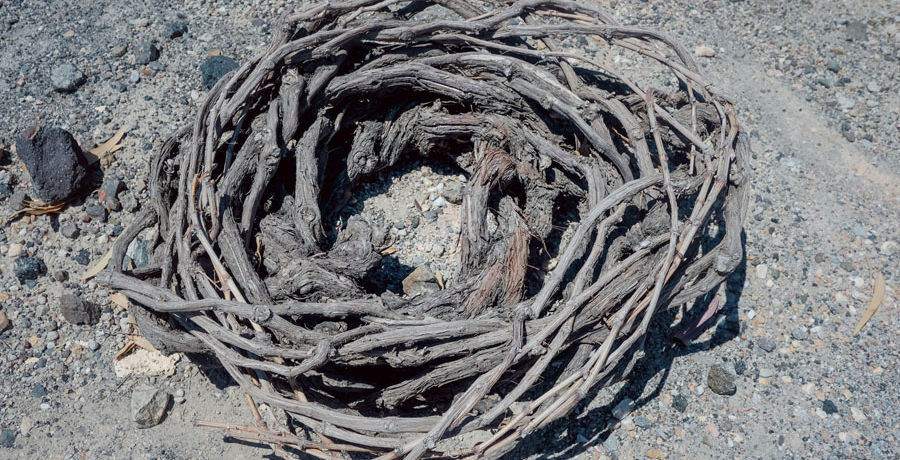
“Living on Santorini is tough as there are no rivers or lakes, scarce rain and violent winds”, explained Anagnostou. “We capture moisture from morning seamists, by wrapping vines into round baskets and keeping grapes inside the wreath to absorb moisture, away from the drying sun”.
With no organic matter and low potassium in the porous volcanic ‘aspa’ soils it is difficult to cultivate vines, but there is no phylloxera here with all vines dry farmed and ungrafted. The average vine age is 70 to 80 years old with incredibly low yields, but old vines can easily be damaged by winds or heatwaves. However – with the hot drying winds there is no need for pesticides, so Santorini is Greece’s only PDO which could be 100% organic. On plots less impacted by wind, the simpler ‘kladeftiko’ vine training method is used.
“Working in the vineyard is difficult – and back-breaking – but in the winery, we are blessed with Assyrtiko”, said Anagnostou. “It can retain high levels of acidity with rich concentrated fruits and classic mineral character”.
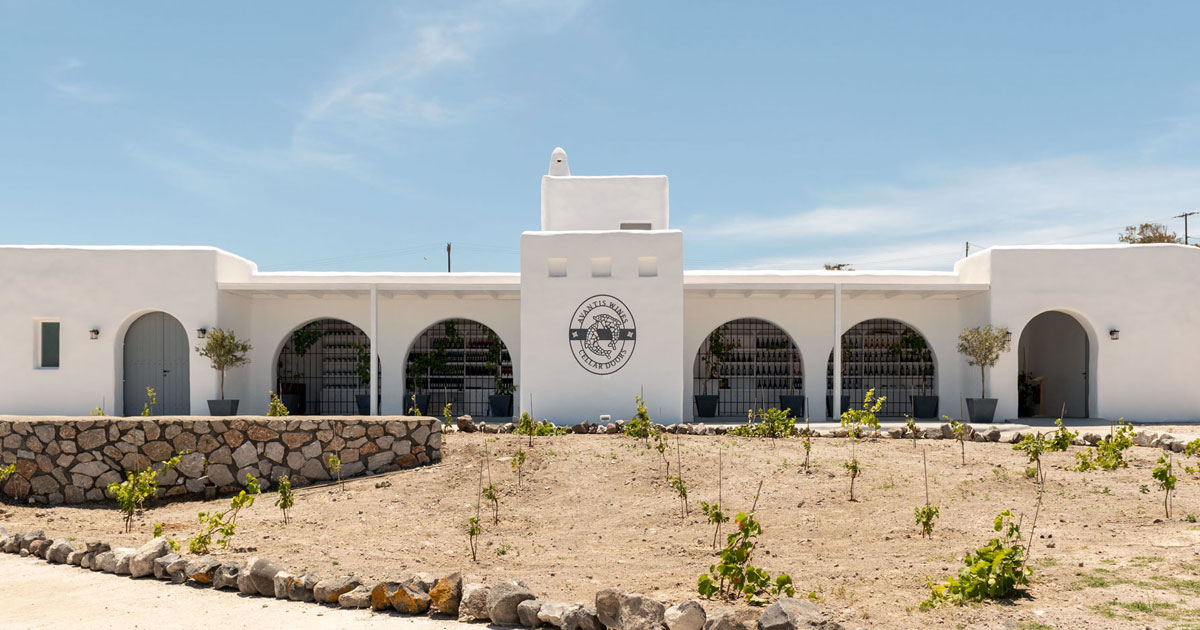
The amazing taste of Assyrtiko comes at a viticultural cost, but it is a grape perfect for climate change as it retains acidity in the heat.
70% of Santorini’s plantings are Assyrtiko (it must be 85% of the Santorini PDO blend), but there are other grapes like floral Athiri and Aidani grown by island’s 1000 growers, 21 wineries and one co-operative (Santo Wines). There are also red grapes grown, including Mandelaria and Mavrotragano.
Santorini’s quality flagship Assyrtiko, is unusual with both high alcohol and high acidity – but early picking to reduce high alcohol levels (usually 13-14%) would not work as the wines would have too much acidity and unwanted tannins. With its high acidity it has great ageing potential, some Santorini whites can last a decade.
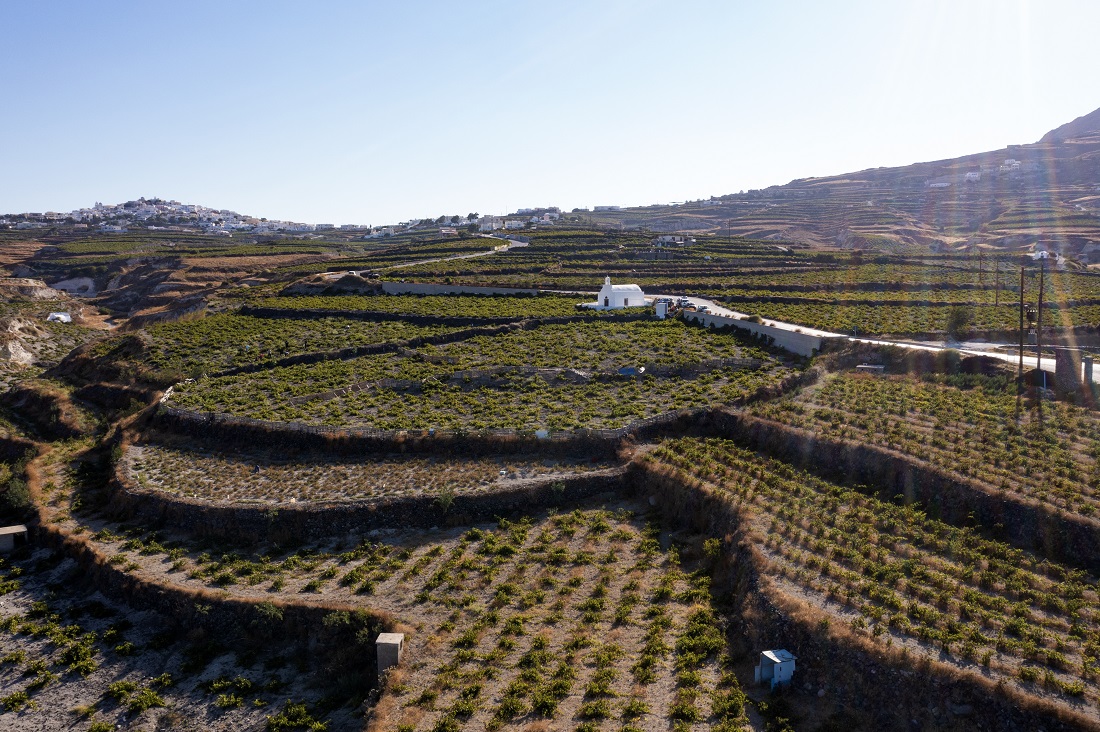
Assyrtiko is so versatile, it can create crisp zesty fruit-driven stainless steel fermented styles ideal as aperitifs or with oysters. It can produce intense weighty citric concentrated wines which are oak fermented and matured, at their best matched with rich foods like smoked cod, saltcrusted seabream, grilled lamb or pork and sage. There is a move on Santorini to use large older oak – and some are experimenting with concrete eggs for fermentation as the wine gains complexity as if it was in oak, but tends to be more aromatic than oaked examples.
As Anagnostou explained, Santorini has had excellent recent vintages. “2019 was the last of our three year drought with very low yields, but 2020 was great for quality with no extremes, 2021 wines are showing good evolution and freshness and the cooler later harvest of 2022 produced aromatic, elegant, minerally wines”.
Santorini is also well known for its dark treacley Vin Santo dessert wins made from later picked white grapes sundried for up to 2 weeks and matured two years in oak. The two Vin Santos we sampled were pruney raisiny 2012 from Gaia Wines (£46.50 bt) and deep dark amber figgy intense complex 2002 from Argyros winery (£95 bt) – pictured below.
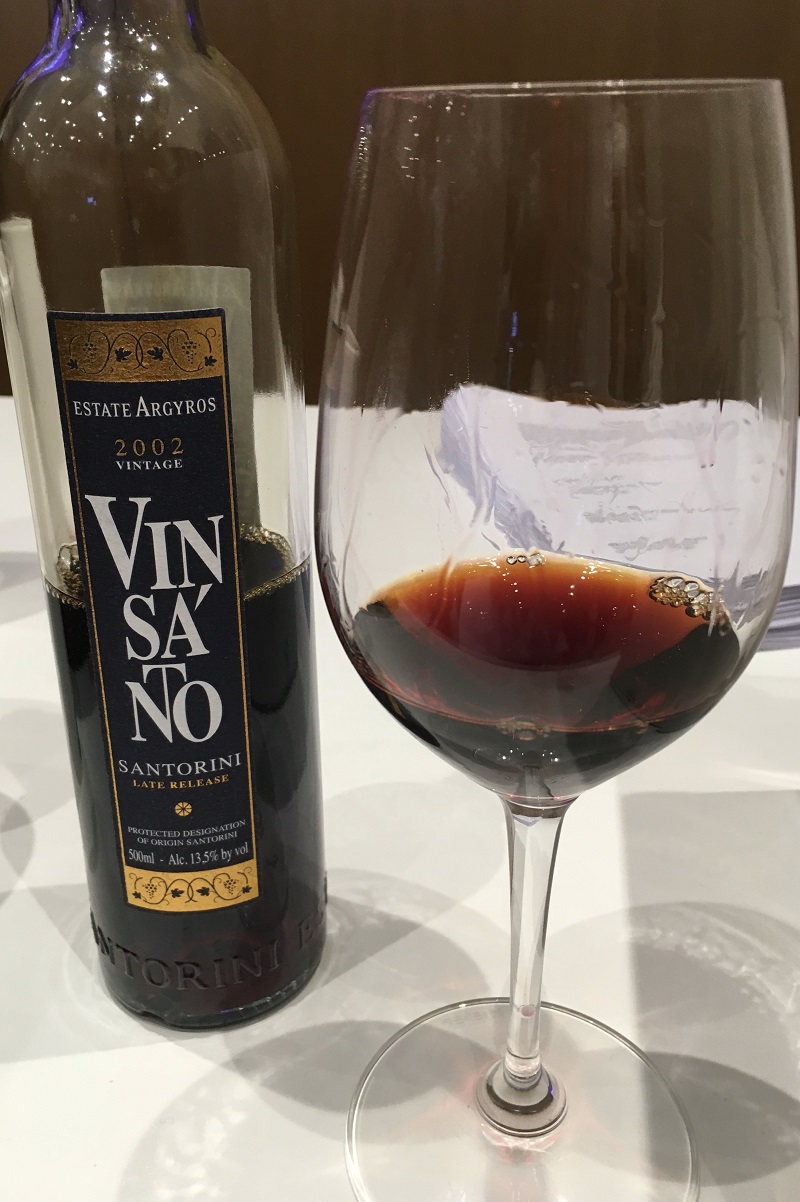
With low yields and handcrafted wines, don’t expect bargain prices from Santorini – but remember there are few regions in the world offering full-bodied whites with such mouthwatering freshness, texture, distinct minerality and salinity all in one glass.
SANTORINI DRY WHITES
ASSYRTIKO 2022 Sigalas
£29 Vinvm
Father figure Paris Sigalas crafts this beautiful tank fermented white: pure fruit core, mineral notes, saline edge.
ASSYRTIKO WILD FERMENT 2022 Gaia Wines
£31 Strictly Wine
Part tank, oak and ceramic spheres matured separately, then blended to this rich attractive weighty nutty – remarkably Burgundian in style.
ASSYRTIKO ‘ICON’ 2021 Anhydrous ***STAR BUY***
£54 Fine Wine Portobello
Super cuvee from two low yield plots near Pyrgos village matured in concrete eggs; nectarines, zesty, rich intense, pronounced minerality, dense & lingering.
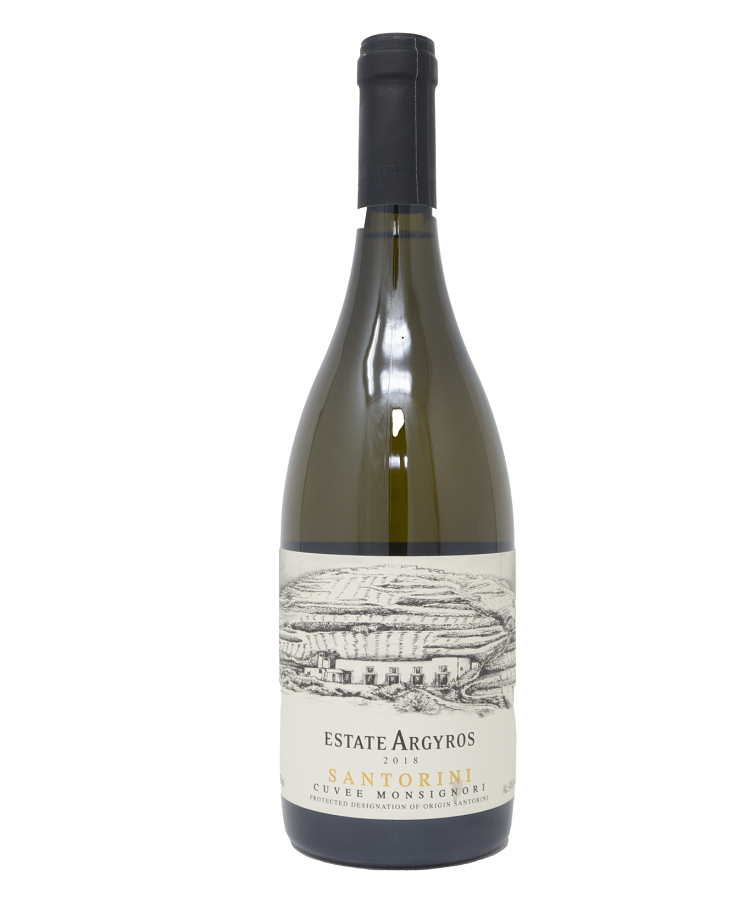
ASSYRTIKO CUVEE MONSIGNORI 2020 Argyros
£31 The Wine Society
Single vineyard unoaked wine from 200 year old vines: floral aromas, salty, textural, initially steely, then smooth well-rounded palate.
NYKTERI ASSYRTIKO 2019 Karamolegos
£38 The Wine Society; Woodwinters
Later harvested, barrel fermented from 100 year old vines; rich citrus concentration, toasty, spicy, oily with lingering saline finish.
By Rose Murray Brown MW Published in The Scotsman 1 July 2023
Join Rose’s Escorted Wine Tour to South America Jan-Feb 2024 www.rosemurraybrown.com
wine tastings
The perfect gift for the wine enthusiast in the family. Rose does In-person tastings too.
cellar advice
Rose does cellar valuations for private clients, valuations for insurers & bespoke portfolio management.
Related stories
March 31, 2024
By Rose Murray Brown MW Published in The Scotsman 30 March 2024 On 2 February 1659, the first wine made from grapes grown in South Africa was crafted by the Governor of the Cape, Jan van Riebeeck. He had planted vines four years earlier in the Company’s Garden near Cape Town from cuttings imported from France. Van Riebeeck’s first
March 24, 2024
By Rose Murray Brown MW Published in The Scotsman 16 March 2024 Heatwaves and bushfires were very much on the agenda when I visited Chile last month as winemakers prepared for their 2024 harvest in blistering heat and drought, with a plume of smoke from the devastating fires lingering over coastal hills. Heat and drought are the greatest challenges
March 23, 2024
By Rose Murray Brown MW Published in The Scotsman 9 March 2024 I have two glasses of Malbec in my hands from the same high-altitude vineyard in Uco valley in Argentina. I am in the Catena Institute of Wine in Mendoza with winemaker Agustin Silva. He has asked me to taste the two wines, both from the 1500m high



